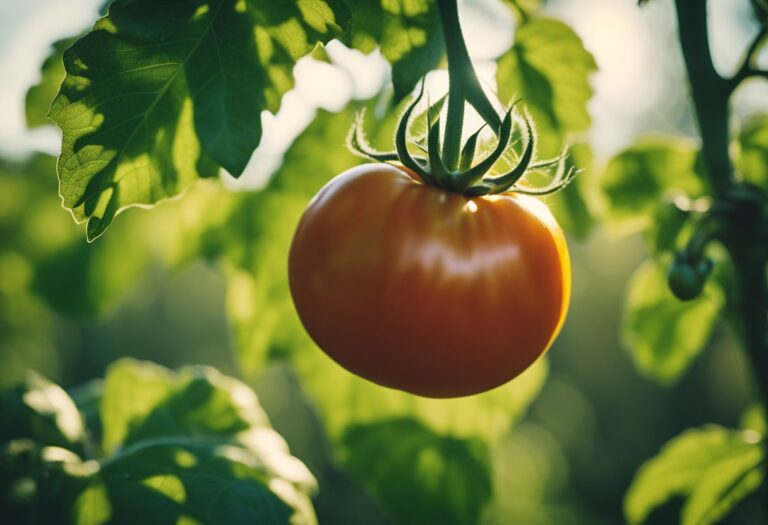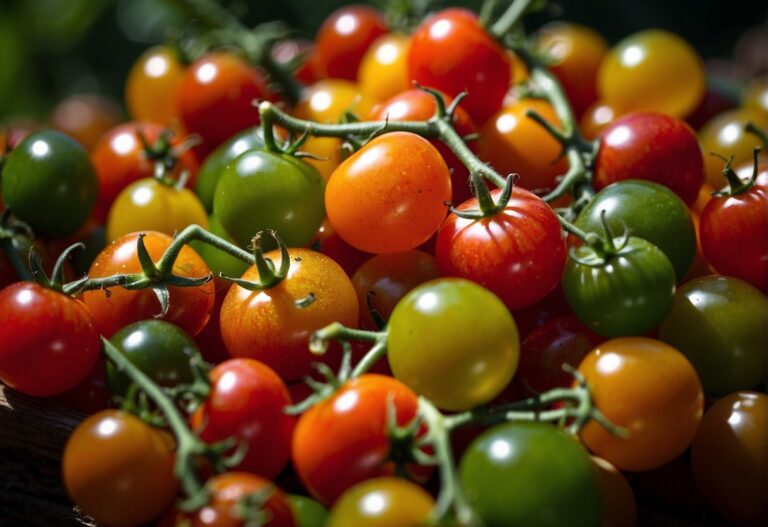History of Tomatoes: From Wild Fruit to Global Staple
Tomatoes have become a staple in most cuisines around the world. Whether it be in a salad, sauce, or on a pizza, it’s hard to imagine a world without this versatile fruit. However, do you know the history of tomatoes?
The origin of tomatoes is still somewhat of a mystery, but it is believed to have originated in South America. The tomato plant is part of the nightshade family, which includes other popular vegetables such as eggplants and peppers.
Tomatoes were first domesticated in Mesoamerica, which is present-day Mexico and northern Costa Rica. It wasn’t until the 16th century that tomatoes were introduced to Europe, and even then, they were initially used as an ornamental plant rather than a food source.
Key Takeaways
- Tomatoes originated in South America and were first domesticated in Mesoamerica.
- Tomatoes were initially used as an ornamental plant in Europe.
- It wasn’t until the 18th century that tomatoes became a popular food source in Europe and North America.
History of Tomatoes
Tomatoes are a popular fruit that is used in many dishes around the world. However, the history of tomatoes is quite fascinating.
Tomatoes are believed to have originated in South America, where they were first domesticated over 2,000 years ago. The first tomatoes were small, cherry-sized fruits that were bred to produce larger fruits in South America. It was only later, in Mesoamerica, that modern-sized tomatoes were developed 1.
When Europeans first encountered tomatoes in the 16th century, they were initially skeptical of them. Some people even believed that they were poisonous. It wasn’t until the 18th century that tomatoes became widely accepted in Europe 2.
Today, tomatoes are grown all over the world and are an important crop for many countries. They are used in a variety of dishes, from salads to soups to sauces. Tomatoes are also a good source of vitamins A and C, as well as potassium 3.
Here are some interesting facts about the history of tomatoes:
- The scientific name for the tomato is Solanum lycopersicum.
- Tomatoes are a member of the nightshade family, which also includes potatoes, eggplants, and peppers.
- The first tomatoes to reach Europe were yellow in color and were known as “pomi d’oro,” or “golden apples,” in Italy 4.
- In the United States, tomatoes were once known as “love apples” 2.
In conclusion, the history of tomatoes is a fascinating one that spans thousands of years. From their humble beginnings in South America to their widespread use around the world today, tomatoes have come a long way. Whether you’re eating them raw or using them in your favorite dishes, tomatoes are a delicious and nutritious fruit that will always have a place in the kitchen.
Footnotes
Cultivation and Growth
Growing tomatoes can be a fun and rewarding experience, but it requires some knowledge and effort. Here are some tips to help you cultivate healthy tomato plants:
Choosing the Right Variety
There are many different types of tomatoes, each with its own unique characteristics and flavor profile. Some popular varieties include:
- Beefsteak: large, meaty tomatoes that are great for sandwiches and salads
- Cherry: small, sweet tomatoes that are perfect for snacking or adding to a salad
- Roma: oblong-shaped tomatoes that are ideal for making sauces and pastes
When choosing a variety, consider factors like the size of your garden, your climate, and your personal preferences.
Starting Seeds
Tomato seeds can be started indoors several weeks before the last frost date in your area. To start seeds, fill a seed tray with potting soil and plant one seed per cell. Keep the soil moist and warm, and the seeds should germinate in about a week.
Once the seedlings have grown a few inches tall, they can be transplanted into larger containers or moved outside to the garden.
Planting in the Garden
Tomatoes need plenty of sunlight, water, and nutrients to grow properly. When planting in the garden, choose a spot that gets at least six hours of sunlight per day and has well-draining soil.
Dig a hole that is slightly larger than the root ball of your tomato plant, and add a handful of compost or fertilizer to the bottom of the hole. Place the plant in the hole and fill in around it with soil. Water thoroughly.
Care and Maintenance
To keep your tomato plants healthy, be sure to water them regularly and fertilize them every few weeks. You should also prune off any suckers that grow between the main stem and the branches.
Tomatoes are prone to a variety of pests and diseases, so keep an eye out for signs of trouble like yellowing leaves, spots, or wilting. If you notice any problems, take action immediately to prevent the issue from spreading.
With a little bit of care and attention, you can grow delicious, healthy tomatoes in your own backyard.


